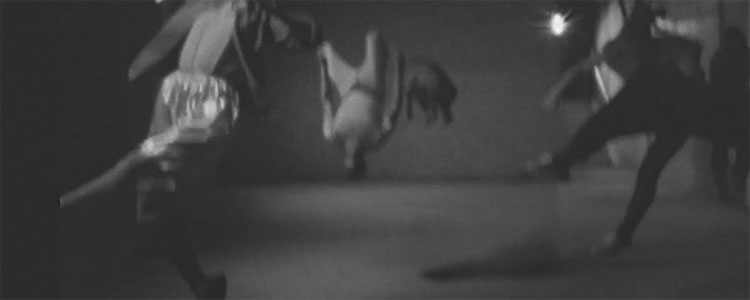
Mixing stunning in-camera effects with glorious black and white cinematography, creative duo Bison’s unforgettable music video for London Grammar track Wasting My Young Years is a haunting vision that only grows in stature after discovering the creative production process involved. Shot on 35mm using a custom built camera rig consisting of 625 pinhole cameras designed to be simultaneously exposed, the resulting breath-taking visuals are a true tribute to the craft and creativity injected into this promo by the innovative production team.
We quizzed Bison’s Owen Silverwood and Dave Bullivant on how they went about creating their camera rig, why they shot on 35mm and what it all meant for post-production:
“It [the camera] was an idea that we had been knocking around for a while with Owen Gundry (Art Director), specifically the idea of lacing film through an adaptable rig. The main challenge was the lens system. We spent a lot of time researching various cheap, plastic lenses and different construction methods, but every solution just threw up more and more problems. We decided to strip everything right back to just pinholes, as we knew we could get consistent, tiny holes laser cut. That was a really interesting point actually, the fact that with laser cutting being so accurate now, we could design the camera to within microns.
We knew we wanted to shoot on film, as I’m sure pretty much every music video director would. It’s just so so hard to make it work with the shrinking budgets these days. Also, the ‘time-slice’ technique is being used quite a bit now that digital cameras are so readily available, and whilst they are great, we wanted to try and do something a little different. We did a test on both 16mm and 35mm film, as there were technical pros and cons with both. The other advantage we had with film, was the massive lattitude and effective resolution. Pinhole photography needs so much light, and you normally do a 30 second exposure to get a decent still. But we needed to freeze motion in the air, and therefore needed so much light. We used powerful studio flashes to flood as much light in as we could.”
With an aesthetic created ‘in-camera’, post-production on this promo may have been minimal, but it was by no means a stress-free process. With Owen, Dave and their crew not knowing if they had an image until the film was exposed (a task they executed themselves), there was a huge sense of relief once they released their risky methods had paid dividends:
“It massively affected the amount of sleep we didn’t get that night after the shoot as we had no idea if anything had worked! Once we got the footage back from the lab, there was a flurry of texts and emails going around all the crew, band, label, etc. just saying WE HAVE AN IMAGE! Actually getting an image on to the film wasn’t really the hardest part. When we did our test shoot, it became apparent that we needed to go back to the drawing board with the camera design as the images we had on the negative just didn’t tally up with the telecine machines that are used to digitise the film. We soon realised the we had to make each exposure fall within 4 perforations of film. Now, we knew that we couldn’t be 100% accurate, as even the thickness of the glue used to bond the rig together, over the course of 600 frames, would end up with the exposure being nudged completely offline. So we sacrificed resolution, and built in some fail safes, and then ran all of the rushes through the telecine machine 4 times, each time advancing 1 perforation, so that we knew we had all of the information that was there. We actually ended up effectively shooting a 16mm frame on 35mm stock, but the wrong way around, as in 9:16 not 16:9. We have to thank Mick at The Mill for helping us figure out the final solutions. That guy knows his stuff.”


